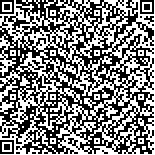本文已被:浏览 1926次 下载 4623次
投稿时间:2009-07-21 修订日期:2010-02-25
投稿时间:2009-07-21 修订日期:2010-02-25
中文摘要: 利用贵州省84站48年观测资料及2008年1月12日至2月14日NCEP 1°×1°的再分析资料,采用统计分析和插值处理,揭示了贵州冻雨以27°N为中轴线的频发地带分布特征。为探讨这一现象,寻找了与频发地带分布相似的典型冻雨个例,并从影响冻雨的冷暖气团、温湿特征等方面进行了讨论。分析指出,贵州冻雨频发地带是冷暖气团共同影响,在有准静止锋的背景下产生的;冻雨天气时,低空有逆温存在。在水平方向上,低空逆温分布范围宽广,逆温中心出现在贵州中东部和湖南西部之间,对应着冻雨区域的强中心。在垂直方向上,当存在明显融化层、温度场呈“冷—暖—冷”结构特征时,对应强冻雨天气;无融化层存在,低层冷中心的冷平流很强,仍可出现较强冻雨。逆温减弱时,冻雨的范围减小。通过分析,给出了一类典型冻雨天气的三维结构。
Abstract:Freezing rain is a major severe weather in Guizhou winter. The observed data in the past 48 years in Guizhou are used to reveal the frequent freezing rain zone at 27 °N as the central axis of the distribution. To research this phenomenon, a typical case has been found, and the impacts on freezing rain coming from the cold warm air mass, and moisture temperature characteristics are discussed. It is pointed out that the frequent freezing rain zone in Guizhou results from the combination of cold and warm air masses and it happens under the background of the quasi stationary front; An obvious melting layer and the temperature field with “cold warm cold” structural features correspond to the strong freezing rain; If without melting layer, the strong advection in the lower atmospheric cooling centers is also able to cause the strong freezing rain. Based on the above analysis, one kind of three dimensional structure for typical freezing rain has been proposed.
keywords: freezing rain, frequent freezing rain zone, cold layer, melting layer,
“cold warm cold” structure
文章编号: 中图分类号: 文献标志码:
基金项目:国家自然科学基金项目40930950,40865003.贵州省科技厅重大科技专项:《贵州突发性气象灾害预警关键技术与应急服务体系研究》共同资助
引用文本:
杜小玲,彭芳,武文辉,2010.贵州冻雨频发地带分布特征及成因分析[J].气象,36(5):92-97.
DU Xiaoling,PENG Fang,WU Wenhui,2010.Distribution and Cause on Frequent Freezing Rain Zone in Guizhou[J].Meteor Mon,36(5):92-97.
杜小玲,彭芳,武文辉,2010.贵州冻雨频发地带分布特征及成因分析[J].气象,36(5):92-97.
DU Xiaoling,PENG Fang,WU Wenhui,2010.Distribution and Cause on Frequent Freezing Rain Zone in Guizhou[J].Meteor Mon,36(5):92-97.

